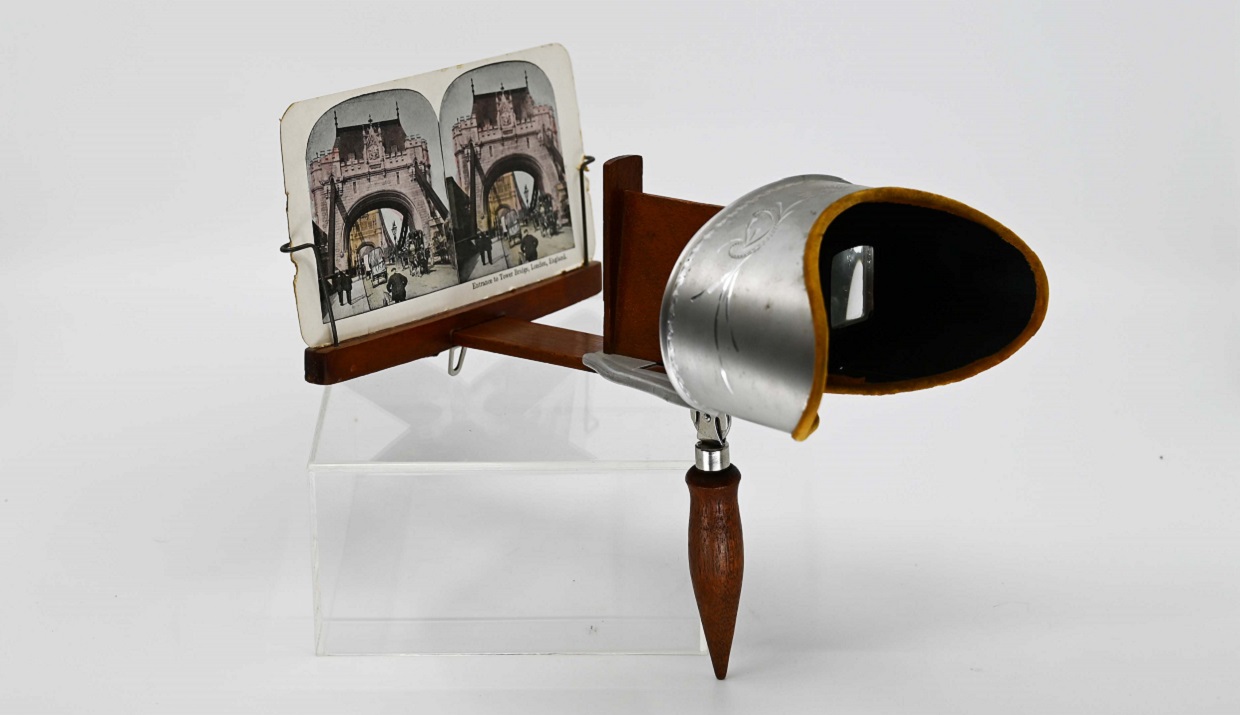The Victorian Stereoscope:
A Window to the World

Stereoscope and Stereograph
76.60.1 and 77.34.7.85
Circa 1900
Material: Wood, aluminum, cardstock
Description
Invented by Charles Wheatstone in 1838, the stereoscope was originally designed to explore binocular vision and the way human eyes work together to create three-dimensional images.
By the 1850s, this fascinating device had become a popular form of Victorian parlor entertainment. Stereographs – the photographic cards designed for use with the stereoscope – featured a wide range of subjects, from famous landmarks to exotic wonders, offering viewers an immersive experience without leaving their homes.
These cards were often purchased as travel souvenirs or simply as a way to marvel at distant places, like the Tower Bridge in London.
Accessible to people of all ages, the stereoscope remained a cherished pastime well into the 20th century, bringing the world to life in vivid 3D for viewers around the globe.
Fun Fact!
The View-Master, first released in the mid-20th century and beloved as a children’s toy well into the early 21st century, was inspired by the design of the stereoscope. It brought 3D viewing technology to a modern audience, making immersive visual experiences accessible to new generations.

